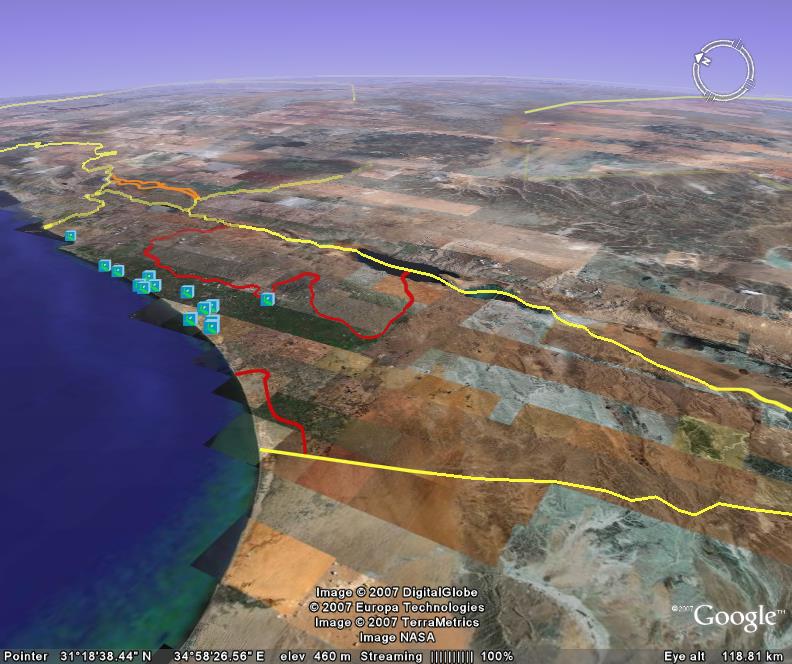New Zealand opens genebank for native plants. No crops, but maybe wild relatives?
Wild relatives to the rescue (again)
You may remember the recent warnings about a new strain of wheat stem rust called Ug99 making its way from the Rift Valley of Africa across the Red Sea to Yemen, thus threatening the very home of wheat in the Middle East. Jeremy blogged about it a couple of months back. Well, resistance to the disease has now been found in about 70% of the 100-odd samples of a wild wheat (Aegilops sharonensis) collected in southern Lebanon and Israel, according to a paper in Plant Disease. Four of the samples actually have resistance to a whole range of fungal diseases:
Co-author of the paper, Yehoshua Aniksterat, of the Israel-based Institute for Cereal Crops Improvement at Tel Aviv University, told SciDev.Net that although it could be difficult — and take up to five years or more — they may be able to transfer genes from wild to cultivated wheat.
The map below is what GBIF knows about the geographic distribution of A. sharonensis 1.
Synthetic wheat
Reconstructing bread wheat introduces novel genetic diversity.
Seed sleuth
There’s a glowing portrait of Ken Street, a plant hunter, in the Sydney Morning Herald. Street works with ICARDA, the International Centre for Agricultural Research in the Dry Areas, based in Aleppo, Syria and spends much his time in the wilds of central Asia, searching out crop diversity. The piece is a bit gushy for my taste, and I’m not sure I agree with everything Street is quoted as saying. “We have been eating genetically modified organisms for 10,000 years” turns the phrase “genetically modified organisms” into meaningless guff. But he does make some good points about the amount of diversity that survives — for now — in places like Armenia and Tajikistan. If you want a glimpse into the life of a man they call “an agricultural Indiana Jones,” that’s what you’ll get.
Luigi unavailable for comment.
Wild cotton in Florida
A little look at wild cotton in Florida, USA.
